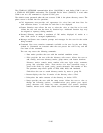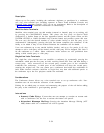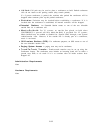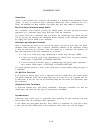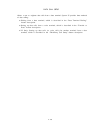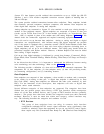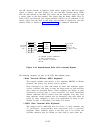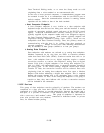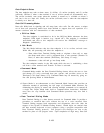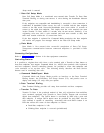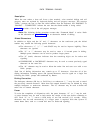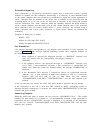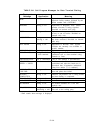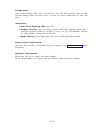Data Terminal Dialing mode,
or to enter the Setup mode on calls
originating from a voice terminal or on auto-answered calls.
In the case of most personal computers, a communications program must
be executed in order for it to communicate with its own RS-232 port or
built-in modem.
Once the communications software is running, further
operation will be similar to that of the basic terminal.
c. Host Computer Endpoint
A host computer endpoint is very
similar to a data endpoint with
keyboard except that the host has many ports and the interface is usually
capable of supporting multiple speeds and more of the RS-232 control
signals.
Front-end communication software running in the host is
typically supplied by the computer vendor and is not designed t
O support
the Data Terminal Dialing feature.
Such software typically supports call
origination through Automatic Calling Units (ACUs), which are not
compatible with Data Terminal Dialing. Thus, the primary means of
communicating with the host is by calling from data terminals or
personal computers.
Groups of host ports with matching characteristics
may be members of hunt groups (referred to as host port groups).
d. Analog Data Endpoint
Data endpoints with modems are referred to as analog data endpoints.
Modems connected via tip ring lines use PDCs as extension numbers
rather than Data Dial Codes (DDCs). Station-to-station data calls to (or
from ) this endpoint from (or to) digital endpoints require a modem
conversion resource to convert the endpoint’s analog data to digital
format. Calls from a digital endpoint to an analog data endpoint (i.e.,
calls to a PDC), will automatically have a conversion resource inserted in
the calling path.
If the called (analog) endpoint should then invoke
Transfer To Data, the conversion resource will be released. Data calls
originating from an analog data endpoint must first enter a Modem
Request Code before addressing a digital data endpoint. This is required
because the system assumes that a call originating from a voice terminal
will invoke Transfer To Data. If the analog data endpoint is not going to
transfer to data, they must indicate this so that a conversion resource
will be included in the connection.
2. DCE Devices
This group of data endpoints consists primarily of modems. The modems are
connected to a data port from their RS-232 side. The data module must be
configured as a DTE interface to provide connectivity between the modem and a
data port. It is possible to simulate a DTE interface from an ADU data module
with a cross-over (“null modem”) cable.
This group of endpoints is important for
users who provide their own modems,
connected to dedicated trunks or private
lines, for internal modem pooling.
2-108



